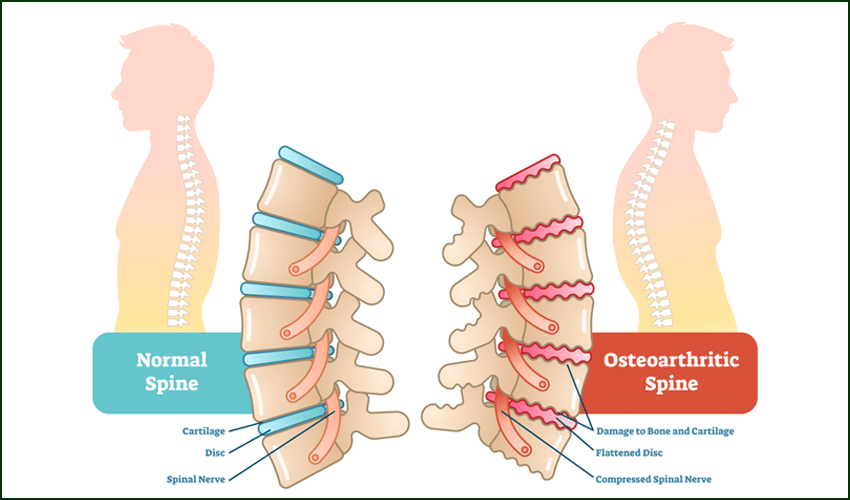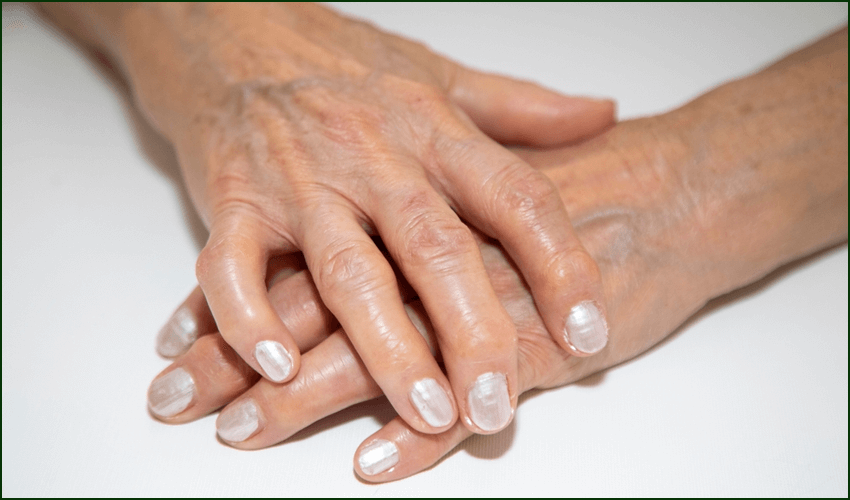Osteoarthritis
- Osteoarthritis is the most common form of arthritis. It is also called degenerative joint disease or wear-tear arthritis. It occurs most frequently in the knees, hands, hips, and spine.
- With osteoarthritis treatment, the cartilage begins to break down and the underlying bones have developed osteophytes. These changes develop slowly.
Osteoarthritis symptoms
- Joint swelling (inflammation)
- Joint pain
- Stiffness or reduced range of motion
- Tenderness
- A feeling of warmth near joints.
- Joint crepitus (clicking or crackling sound in a joint)
How common is osteoarthritis?
- Osteoarthritis (degenerative arthritis) is very common. Experts estimate that more than 80 % of adults older than 55 years have osteoarthritis.
Osteoarthritis risk factors :
- Post menopause age
- Obesity, high cholesterol, diabetes
- Some autoimmune diseases.
How is osteoarthritis diagnosed?

- Physical examination: A healthcare provider will diagnose osteoarthritis with a physical examination. They will look at your joints and ask when you first noticed symptoms.
- X-rays: Doctors might use X-rays to take pictures of affected joints.
- MRI (Magnetic resonance imaging) and CT (Computed tomography): might be useful for ruling out conditions.
- Blood tests: Blood tests are also useful to rule out issues that cause similar diseases.
osteoarthritis treatment
- Doctors will assist you in finding suitable treatment to reduce symptoms associated with osteoarthritis. There is no cure for arthritis and can’t regrow the cartilage in affected joints. Doctors will help find ways to manage symptoms.
The most common treatment include
- Medication: Pain relievers (analgesics) can help reduce pain and inflammation.
- Exercise: Moving joints can relieve stiffness of joints and strengthen the muscles around joints. Low-impact activities like walking, swimming, and cycling can all help.
- Supportive devices: Wearing shoe inserts or a brace can support and stabilize joints. Using a cane (walking stick) or walker can help move safely.
- Heat and cold therapy: Applying heat and cold therapy to affected joints helps relieve pain and stiffness.
- Surgery: Most people don’t need surgery to treat osteoarthritis. If you are experiencing severe symptoms with joint stiffness and other treatment haven’t worked, might need joint replacement surgery.
How can I prevent osteoarthritis?
- The best way to prevent osteoarthritis is to maintain good overall health.
- Doing low-impact exercise.
- Following a healthy diet.
- Avoiding tobacco and other habits.
Ayurvedic concept on arthritis (संधिवात):

- Sandhivat is the disease mentioned in Ayurveda and is a type of vatvyadhi. Acharya Charak describes vatvyadhi chapter in chikitsa sthan 28, osteoarthritis most commonly occurs in old age due to dhatukshaya.
- Sandhivat (osteoarthritis) is one of the challenging diseases due to its chronicity, incurability, and complications. The treatment procedure described in Ayurveda focuses not only on drugs but also give panchkarma therapy and lifestyle modification.
- Sandhivat term is derived from two words sandhi (joint) and vata (air element). When vat vitiates and lodges in sandhi (joint), it is characterized as sandhivat vata (arthritis). The clinical presentation of sandhivat closely mimics osteoarthritis.
Vat aggravated causes
- Dry or cold food, less quantity of food, and easy-to-digest food.
- Awake at night or sleep during the daytime.
- Excessive sex.
- Anger, fear
- Inappropriate or excess panchakarma therapies.
- Excessive swimming, fasting, walking, exercise
- Oversleeping, uncomfortable sitting.
- Suppression of natural urges.
- Improper digestion and metabolism.
- Trauma or injuries to vital spots.
- Riding over elephants, camels, horses, or vehicles
रुक्ष शीत अल्प लघु अन्न व्यवाय अति प्रजागरै: |
विषमात् उपचार: च दोष असृक स्रवणात् अति ||
लंघन प्लवन अत्यध्व व्यायाम अति विचेष्टितै: |
धातुनां संक्षया चिन्ता शोक रोगात् अति कर्षणात् ||
दुःखशय्या आसनात् क्रोधात् दिवास्वप्नात् भयात् अपि |
वेगसंधारणात् आमात् अभिघातात् अभोजनात् ||
मर्माघातात् गज उष्ट्र अश्व शीघ्रयान अपतंसनात् |
चरक संहिता चि – 28/15
Symptoms of sandhivata
- Crepitus is present in joints.
- Swelling (inflammation)
- Pain during extension and flexion of joints.
- Degenerative changes in the joints (Acharya sushrut)
वातपूर्णद्रुति स्पर्श: शोथ: सन्धिगते अनिले |
प्रसारण आकुन्चनयो: प्रवृति: च सवेदना ||
चरक चि . 28/37
Line of treatment
- Shodhan chikitsa : detoxification panchakarma procedures including
snehan, swedan, virechan, and basti.
- Shaman chikitsa : done through oral medications and external applications.
- Pathya (diet): healthy diet habits and lifestyle are equally important.
Read More about Rheumatoid Arthritis and Osteoarthritis here

